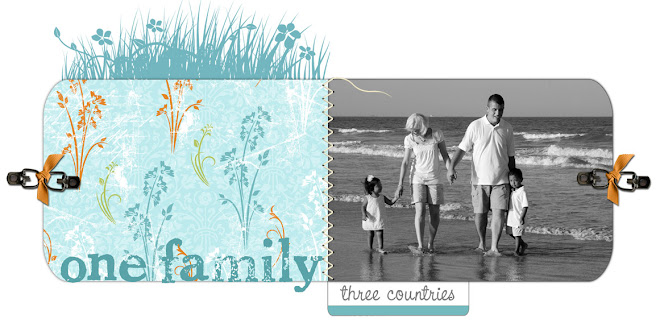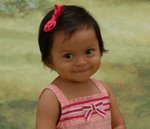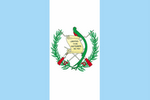
 Guatemalans make many traditional handicrafts, both for everyday use and to sell to tourists and collectors. Crafts include basketry, ceramics and wood carvings, but the most prominent are weaving, embroidery and other textile arts practiced by Mayan women. The beautiful traje (traditional clothing) made and worn by these women is one of the most awe-inspiring expressions of Mayan culture.
Guatemalans make many traditional handicrafts, both for everyday use and to sell to tourists and collectors. Crafts include basketry, ceramics and wood carvings, but the most prominent are weaving, embroidery and other textile arts practiced by Mayan women. The beautiful traje (traditional clothing) made and worn by these women is one of the most awe-inspiring expressions of Mayan culture.The most arresting feature of there costumes is their highly colorful weaving and embroidery, which makes many garments true works of art. It’s the woman’s huipil, a long, sleeveless tunic that receives the most painstaking loving care in its creation. Often entire huipiles are covered in a multicolored web of stylized animal, human, plant and mythological shapes that can take months to complete. Each garment identifies the village from which its weaver hails (the Spanish colonists allotted each village a different design order to distinguish their inhabitants from each other) and within the village style there can be variations according to social status, as well as the creative individual touches that make each garment unique.


The huipil is one of several types of garment that have been in use since pre-Hispanic times. Other colorful types include the tocoyal, a woven head-covering often decorated with bright tassels; the corte, a piece of material 7m or 10m long that is used as a wraparound skirt; and the faja, a long woven waist sash that can be folded to hold what other people might put in pockets. Blouses are colonial innovations. Mayan men’s garments owe more to Spanish influence, hat and calzones, long baggy shorts that evolved into full-length paints in most regions, were introduced in colonial times. Mayan men now generally wear dull Western clothing, however, except in places such as Sololá and Todos Santos Cuchumatán where they still sport colorful traje.
Materials and techniques are changing, but the pre-Hispanic backstrap loom is still widely used. The wrap (long) threads are stretched between two horizontal bars, one of which is fixed to a post or tree, while the other is attached to a strap that goes round the weaver’s lower back. The weft (cross) threads are then woven in. Throughout the highlands you can see women weaving in this manner outside the entrance to their homes. Nowadays, some huipiles and fajas are machine made, as this method is faster and easier than hand weaving.


Yarn is still hand-spun in many villages. For the well-to-do, silk threads are use to embroider bridal huipiles and other important garments. Vegetable dyes are not yet totally out of use, and red dye from cochineal insects and natural indigo are employed in several areas. Modern luminescent dyes go down very well with the Maya, who are happily addicted to bright colors.
It’s generally in the highlands, which are heavily populated by Maya, that the colorful traditional dress is most in evidence, though you will see it in all parts of the country.
Materials and techniques are changing, but the pre-Hispanic backstrap loom is still widely used. The wrap (long) threads are stretched between two horizontal bars, one of which is fixed to a post or tree, while the other is attached to a strap that goes round the weaver’s lower back. The weft (cross) threads are then woven in. Throughout the highlands you can see women weaving in this manner outside the entrance to their homes. Nowadays, some huipiles and fajas are machine made, as this method is faster and easier than hand weaving.


Yarn is still hand-spun in many villages. For the well-to-do, silk threads are use to embroider bridal huipiles and other important garments. Vegetable dyes are not yet totally out of use, and red dye from cochineal insects and natural indigo are employed in several areas. Modern luminescent dyes go down very well with the Maya, who are happily addicted to bright colors.
It’s generally in the highlands, which are heavily populated by Maya, that the colorful traditional dress is most in evidence, though you will see it in all parts of the country.









No comments:
Post a Comment